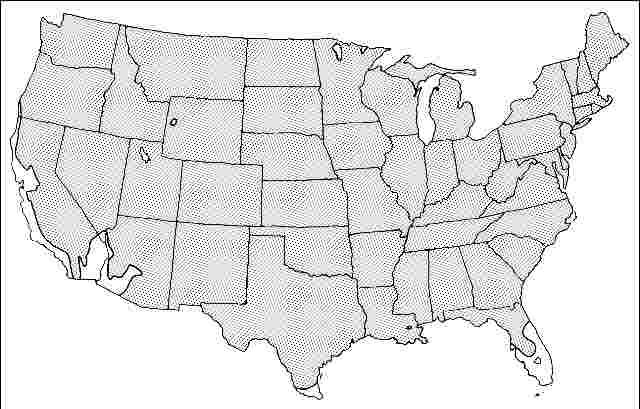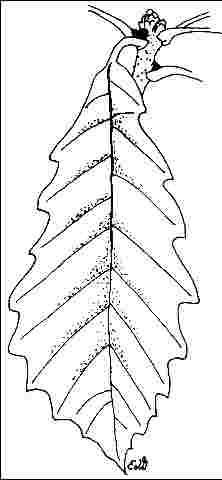Introduction
Chinkapin oak is seen at 70 to 90 feet in height when found in the wild but is more often seen at 40 to 50 feet in height with an equal or greater spread when grown in cultivation. It grows at a moderate rate when young but slows considerably with age, eventually developing into a broad, rounded canopy with strong branches. Young trees often exhibit a straight central leader with numerous branches originating at the same node. The yellow/green, deciduous, lobed leaves turn shades of red, yellow, orange, and brown before dropping in fall. Veins are distinctly prominent on the undersides of the coarse-textured leaves. The acorns which are produced are edible.

Credit: Ed Gilman, UF/IFAS
General Information
Scientific name: Quercus muehlenbergii
Pronunciation: KWERK-us mew-len-BER-jee-eye
Common name(s): Chinkapin oak, chestnut oak
Family: Fagaceae
USDA hardiness zones: 3A through 8B (Fig. 2)
Origin: native to North America
Invasive potential: little invasive potential
Uses: reclamation; street without sidewalk; shade; highway median; parking lot island > 200 sq ft; tree lawn > 6 ft wide
Availability: somewhat available, may have to go out of the region to find the tree

Description
Height: 40 to 60 feet
Spread: 50 to 60 feet
Crown uniformity: symmetrical
Crown shape: spreading, round
Crown density: moderate
Growth rate: fast
Texture: medium
Foliage
Leaf arrangement: alternate (Fig. 3)
Leaf type: simple
Leaf margin: dentate, undulate
Leaf shape: elliptic (oval), oblong, lanceolate, obovate
Leaf venation: pinnate
Leaf type and persistence: deciduous
Leaf blade length: 4 to 8 inches
Leaf color: green
Fall color: yellow
Fall characteristic: showy

Flower
Flower color: brown
Flower characteristics: not showy
Fruit
Fruit shape: oval, round
Fruit length: .5 to 1 inch
Fruit covering: dry or hard
Fruit color: brown
Fruit characteristics: attracts squirrels/mammals; not showy; fruit/leaves a litter problem
Trunk and Branches
Trunk/bark/branches: branches droop; not showy; typically one trunk; thorns
Pruning requirement: little required
Breakage: resistant
Current year twig color: brown
Current year twig thickness: thin, medium
Wood specific gravity: unknown
Culture
Light requirement: full sun
Soil tolerances: clay; sand; loam; alkaline; acidic; occasionally wet; well-drained
Drought tolerance: high
Aerosol salt tolerance: moderate
Other
Roots: not a problem
Winter interest: no
Outstanding tree: no
Ozone sensitivity: unknown
Verticillium wilt susceptibility: resistant
Pest resistance: resistant to pests/diseases
Use and Management
Small specimens are often grown with an upright, oval habit. Older trees develop a more open, rounded form. This oak should be grown with a single trunk and widely-spaced branches to mimic its growth habit in the wild. The first permanent branch can be located three to five feet from the ground if the tree will be planted in an open lawn area and allowed to develop a wide crown. For those planted as street trees or in areas requiring clearance for vehicles or pedestrians, the first permanent branch should be higher on the trunk.
Chinkapin oak should be grown in full sun on well-drained soil. It reaches its greatest size on loose, bottomland soils and is well adapted to alkaline soils. This is an adaptable oak which has been planted often in the central part of the country were soils are often clayey and alkaline. It will grow quite nicely in other areas of the country as well.
Propagation is by seed but plants have been considered difficult to transplant. There are a number of root-promoting techniques developed for nursery production which should improve the branching of the root system, and this should improve the transplantability of this oak.
Pests and Diseases
No pests or diseases of major concern.
